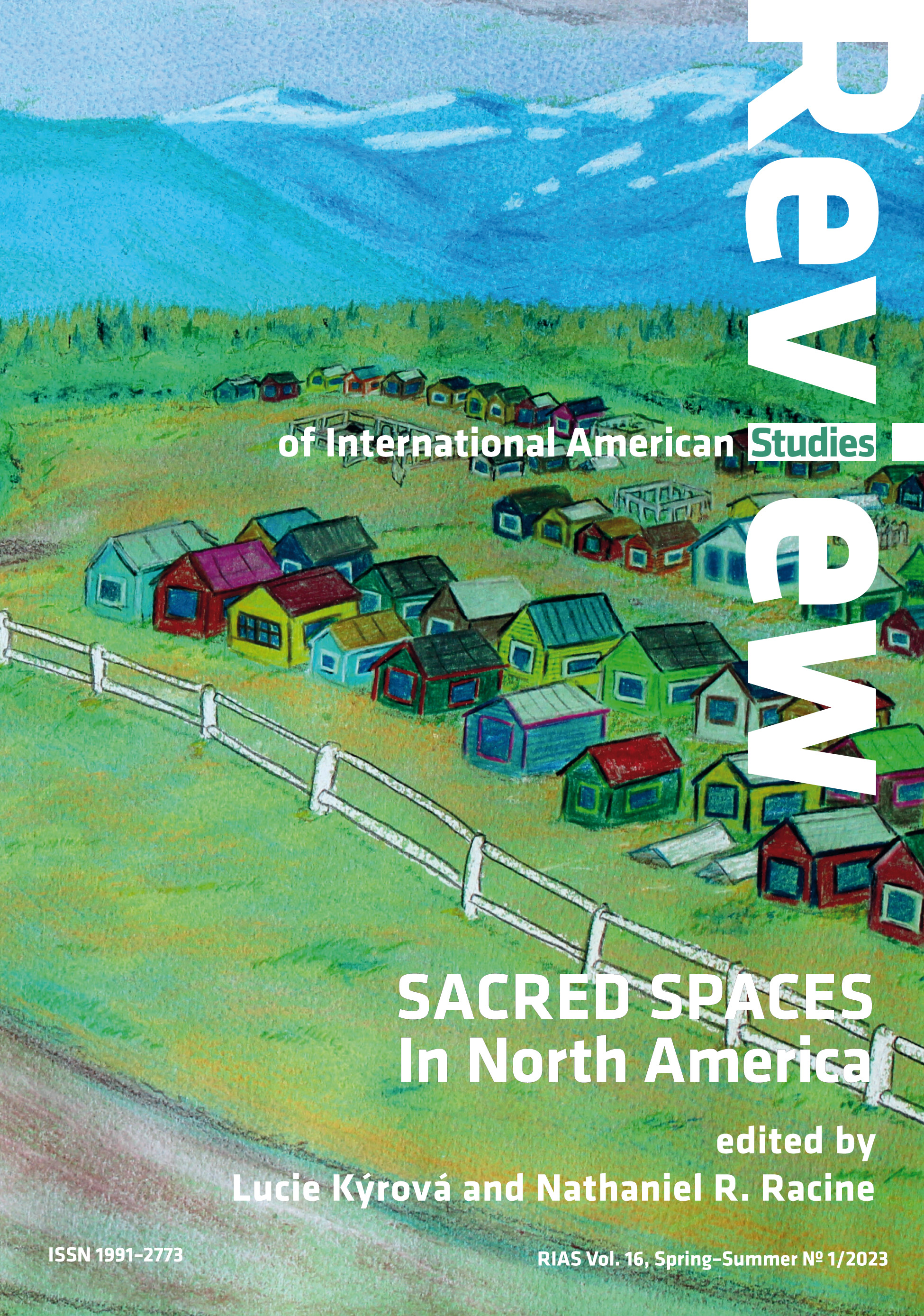Alexis, Jeremiah Bartlett. “Nova Scotia Museum Printed Matter File.” In Whitehead 1991, pp. 274-275.
Google Scholar
Bergland, Renée L. The National Uncanny: Indian Ghosts and American Subjects. Dartmouth College P, 2000.
Google Scholar
Boese, Logan. “Redefining ‘Indie’ Horror: Jeff Barnaby’s Remarkable Impact.” A Tribe Called Geek, 25 Oct. 2022, https://atribecalledgeek.com/a-tribute-to-jeff-barnaby/. Accessed 17 Feb. 2023.
Google Scholar
Boo, Kyung-Sook. “Drawing Indians: The Politics of Representation in Jeff Barnaby’s Rhymes for Young Ghouls.” English and American Culture, vol. 15, no. 3, 2015, pp. 197-221.
Google Scholar
Browning, Mark. Stephen King on the Big Screen. Intellect, 2009.
Google Scholar
Chearnley, William. “4 March 1854 Letter to Joseph Howe.” In Whitehead 1991, pp. 252-253.
Google Scholar
Cleaver, Nathan. A Materialist Critique of the Settler Occupation of Maine in Stephen King’s Pet Sematary. 2020. Florida Atlantic University, Master’s Thesis.
Google Scholar
Davis, Stephen A. Peoples of the Maritimes: The Micmac. Four East Publications, 1991.
Google Scholar
de Champlain, Samuel. The Works of Samuel de Champlain. In Whitehead 1991, pp. 30-31.
Google Scholar
Dickey, Colin. Ghostland: An American History in Haunted Places. New York, Viking, 2016.
Google Scholar
Dickey, Colin. “Why Pet Sematary Refuses to Die.” The New Republic, 11 April 2019, https://newrepublic.com/article/153546/pet-sematary-refuses-die. Accessed 03 Sept. 2022.
Google Scholar
Freneau, Philip. “The Indian Burying Ground.” The Poems of Philip Freneau: Poet of the American Revolution. Edited by Fred Lewis Pattee, vol. 2, Princeton U Library, 1903, pp. 369-70.
Google Scholar
Ginnish, Peter. The Micmac Indians of Eastern Canada. In Whitehead 1991, p. 153.
Google Scholar
Hardy, Campbell. “In Evangeline’s Land.” In Whitehead 1991, p. 214.
Google Scholar
Hendrix, Grady. “The Great Stephen King Re-Read: Pet Sematary.” Tor.com, 24 Jan. 2013, www.tor.com/2013/01/24/the-great-stephen-king-re-read-pet-sematary/. Accessed 6 Sept. 2022.
Google Scholar
Hornborg, Anne-Christine. A Landscape of Leftovers: Changing Conceptions of Place and Environment among Mi’kmaq Indians of Eastern Canada. KFS, International, 2001.
Google Scholar
Hunchman, Kallie. “Stolen Spirits: The Appropriation of the Windigo Spirit in Horror Literature.” Ball State University Digital Literature Review: Ghosts and Cultural Hauntings, no. 7, 2020, pp. 101-112.
Google Scholar
James, Jennifer. “Micmac Legacy in Lunenburg County.” In Whitehead 1991, pp. 318-319.
Google Scholar
King, Stephen. Pet Sematary. 1983. Simon & Schuster, 2001.
Google Scholar
Kirsch, Johann Peter. “St. Dymphna.” New Advent. https://www.newadvent.org/cathen/05221b.htm. Accessed 03 May 2023.
Google Scholar
Leal, Melissa. “Review of Rhymes for Young Ghouls” Comparative Education Review, May 2015, pp. 383-385.
Google Scholar
Lempert, William. “Decolonizing Encounters of the Third Kind: Alternative Futuring in the Native Science Fiction Film.” Visual Anthropology Review, vol. 30, no.2, 2014, pp. 164-176.
Google Scholar
Lescarbot, Marc. History of New France. In Whitehead 1991, p. 31.
Google Scholar
Mackenthun, Gesa. “Haunted Real Estate: The Occlusion of Colonial Dispossession and Signatures of Cultural Survival in U.S. Horror Fiction.” Amerikastudien/American Studies, vol. 43 no. 1, 1998, pp. 93-108.
Google Scholar
“Maine Indian Claims Settlement.” Maine State Legislature: Legislative History Collection, last updated July 2022, www.maine.gov/legis/lawlib/lldl/indianclaims/index.html. Accessed 03 Sept. 2022.
Google Scholar
Nazare, Joe. “The Horror! The Horror? The Appropriation, and Reclamation, of Native American Mythology.” The Journal of the Fantastic in the Arts, vol. 11, no. 1, 2000, pp. 24-51.
Google Scholar
Nova Scotian and Weekly Chronicle. “10 July 1903.” In Whitehead 1991, pp. 226-227.
Google Scholar
Passamaquoddy Point Pleasant Tribal Government. “Maine Indian Tribal-State Commission: Maine Indian Land Claims Case.” Wabanaki.com, http://www.wabanaki.com/me_land_claim.htm. Accessed 13 Sept. 2017.
Google Scholar
“Petergeist.” Family Guy, written by Alec Sulkin and Wellesley Wild, directed by Sarah Frost, 20th Century Fox Television, 2006.
Google Scholar
Pet Sematary. Directed by Mary Lambert, performances by Dale Midkiff, Fred Gwynne, Denise Crosby, Paramount, 1989.
Google Scholar
Piers, Harry. “Unpublished Notes from Nova Scotia Museum Printed Matter File.” In Whitehead 1991, p. 107.
Google Scholar
Pitman, Randy. “Pet Sematary.” Library Journal, vol. 114, no. 17, 1989, pp. 116.
Google Scholar
Raheja, Michelle H. Reservation Reelism: Redfacing, Visual Sovereignty, and Representations of Native Americans in Film. U of Nebraska P, 2010.
Google Scholar
Rand, Silas. Legends of the Micmacs. In Whitehead 1991, pp. 84-85.
Google Scholar
Rhymes for Young Ghouls. Directed by Jeff Barnaby, performances by Devery Jacobs, Glen
Google Scholar
Gould, Brandon Oakes, and Mark Anthony Krupa, Prospector Films, 2013.
Google Scholar
Ribault, Jean-Yves. Les Iles Saint-Pierre et Miquelon. In Whitehead 1991, p. 177.
Google Scholar
Singer, Michael. A Cut Above: 50 Film Directors Talk About Their Craft. Lone Eagle Publishing, 1998.
Google Scholar
Smith, Ariel. “This Essay Was Not Built On an Ancient Indian Burial Ground.” Offscreen, Offscreen.com, vol. 18, issue 8, August 2014, offscreen.com/view/horror-indigenous-cinema. Accessed 03 Sept. 2022.
Google Scholar
Strick, Philip. “Pet Sematary.” Monthly Film Bulletin, Nov. 1, 1989, pp. 341-2.
Google Scholar
South Park. Created by Trey Parker and Matt Stone, performances by Trey Parker, Matt Stone,
Google Scholar
Isaac Hayes, and Mona Marshall, Comedy Central, 1997-2022.
Google Scholar
Thom, Sabrina. “The Transformative Power of Words: Subverting Traumatic Experiences in Tomson Highway’s Kiss of the Fur Queen and Lee Maracle’s ‘Goodbye Snauq.’”
Google Scholar
Anglica: An International Journal of English Studies, vol. 25, no. 1, 2016, pp. 199-217.
Google Scholar
“Treehouse of Horror.” The Simpsons, written by John Swartzwelder, directed by Wes Archer, 20th Television, 1990.
Google Scholar
Unearthed and Untold: The Path to Pet Sematary. Directed by John Camponpiano and Justin White, performances by Stephen King, Mary Lambert, Brad Greenquist and Sean Clark, Ocean’s Light Productions, 2017.
Google Scholar
“Variety Film Reviews: Pet Sematary.” Variety, vol. 335, no. 1, 1989, pp. 26.
Google Scholar
Vespe, Eric. “Pet Sematary Prequel Casting Suggests They May Finally Explore That ‘Indian Burial Ground’ Thing.” Slashfilm.com, 11 July 2021, www.slashfilm.com/582334/pet-sematary-prequel-cast/. Accessed 06 Sept. 2022.
Google Scholar
Weinstock, Jeffrey A. “Maybe It Shouldn’t be a Party: Kids, Keds, and Death in Stephen King’s Stand by Me and Pet Sematary.” Films of Stephen King: From Carrie to Secret Window. Edited by Tony Magistrale. Palgrave Macmillan, 2008.
Google Scholar
Whitehead, Ruth, editor. The Old Man Told Us: Excerpts from Micmac History, 1500-1950. Nimbus Publishing, 1991.
Google Scholar
Whitehead, Ruth. Stories from the Six Worlds: Micmac Legends. Halifax, Nimbus Publishing, 1988.
Google Scholar


 https://doi.org/10.31261/rias.14624
https://doi.org/10.31261/rias.14624

 10.31261/RIAS
10.31261/RIAS